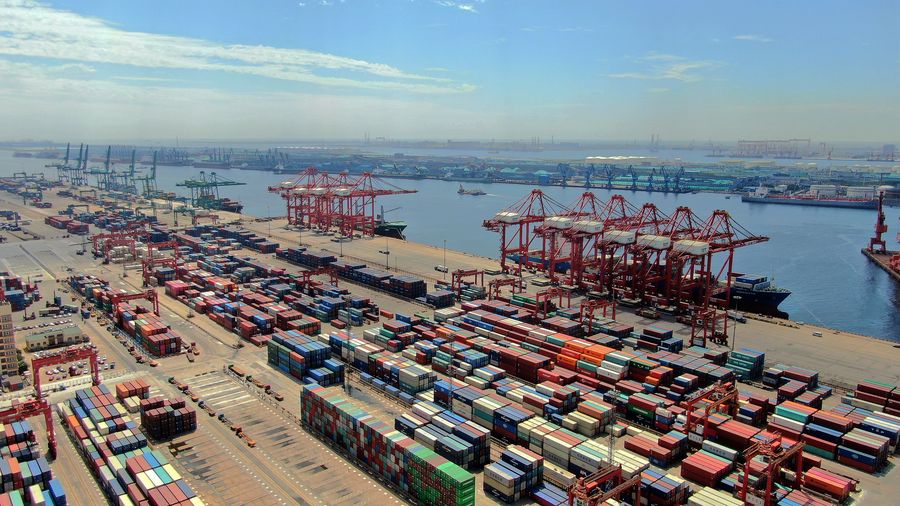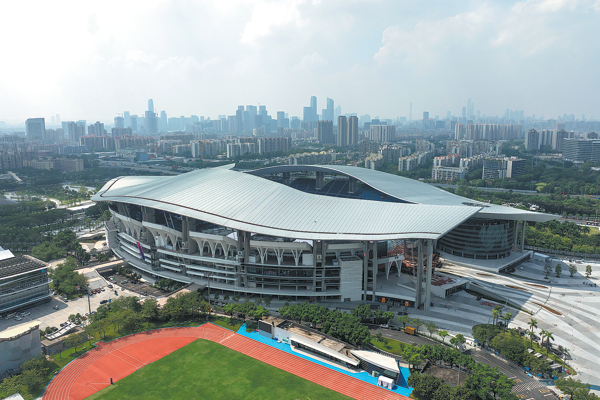Ports join with Tianjin to form major shipping cluster


Tianjin Port, one of the world's top 10 ports in cargo volume, is accelerating its efforts to become a world-class international shipping hub, said Liang Yongcen, vice-chairman of Tianjin Port (Group) Co.
Currently, there are five major ports along the 640-kilometer coastline of Hebei province and Tianjin, including Cangzhou, Huanghua, Caofeidian, Qinhuangdao and Tianjin. Together, they aim to form an international port cluster, with Tianjin as the hub.
In recent years, Tianjin Port has been a key point in North China for ocean transportation. It has sharpened its competitive edge and aided the coordinated development of Beijing, Tianjin and Hebei.
Led by Tianjin Port, the ports in the region decided to join hands, rather than compete as rivals. Since 2014, ports in Tianjin and Hebei set up joint companies to expand their shipping network.
"Since the opening of the Tianjin-Caofeidian water route, the throughput capacity of Caofeidian Port in Hebei province has grown by 5 percent year-on-year for two years, and in 2020 large vessels arriving in Caofeidian surged by 20 percent," said Zhang Jianping, vice-Party secretary of Caofeidian Port Group.
To date, Tianjin Port has developed a network of 19 shipping routes featuring ports in Hebei. The container throughput of the shipping network topped more than 1 million twenty-foot equivalent units last year, up 67 percent year-on-year, Zhang said.
Tianjin Port plays a pivotal role in Beijing-Tianjin-Hebei coordinated development.
Liang, the port official and a national political advisor, proposed during the ongoing annual session of the Chinese People's Political Consultative Conference National Committee that the country should focus on the connection of waterways between Tianjin Port and Xiong'an New Area in Hebei province.
"The waterway between the two ports may date to Ming Dynasty (1368-1644), but it has been suspended for decades," he said. "This waterway would make it easy to transport construction materials to the new area."
He also suggested developing the railways connecting Tianjin Port and western China, which is expected to facilitate China's trade with countries engaged in the Belt and Road Initiative.
Last year, Tianjin Port logged record container throughput of 18.35 million TEUs, up 6.1 percent year-on-year.
Tianjin Port, which connects to some 800 ports in more than 200 countries and regions, has an ambitious target for handling capacity: It wants to see a surge to 30 million TEUs by 2028.
"Tianjin Port will step up its green and intelligent management of the ports, consolidate its position as one of the top 10 in the world, and accelerate reforms as a State-owned enterprise in the SOE reform wave in the country," Liang said.
- China condemns US $330m arms sale to Taiwan
- Transformation of healthcare in Xizang celebrated
- Confucius Institute expanding with new projects
- Potala Palace to implement Monday closure policy
- Workers with disabilities building new kind of community in Taicang
- Dongying birdwatching: More than birds, legacy in sky





































